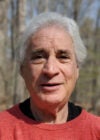
Egelman, Edward H.
Primary Appointment
Professor, Biochemistry and Molecular Genetics
Education
- BA, Physics, Brandeis University, Waltham, MA
- PhD, Biophysics, Brandeis University, Waltham, MA
- Postdoc, Biophysics, MRC Lab. of Mol. Biology, Cambridge, UK
Contact Information
PO Box 800733
1340 JPA Pinn Hall Room 6037
Charlottesville, VA 22908
Telephone: 434-924-8210
Fax: 434-924-5069
Email: ehe2n@virginia.edu
Website: http://www.people.virginia.edu/~ehe2n
Research Disciplines
Biochemistry, Biophysics, Evolutionary Biology, Infectious Diseases/Biodefense, Structural Biology
Research Interests
Structure and Function of Macromolecular Complexes Using Electron Microscopy
Research Description
Our research is focused on the structure and function of macromolecular assemblies, using the techniques of electron cryo-microscopy and three-dimensional reconstruction. Historically, we have been working in two different areas: protein-DNA complexes and F-actin. However, the development of new techniques by us for working with helical polymers has expanded our interest to many other systems, from bacterial pili to the filaments formed on foreign RNA and DNA in the cell as part of the innate immune response. We are now at the point where we can achieve near-atomic resolution almost routinely for many filamentous biological assemblies!
A number of themes have emerged from our work. One is the lability of quaternary structure: while the overall fold of a protein is usually not altered by a small number of sequence changes, the higher-order assemblies formed by proteins can be dramatically changed. We have postulated that this provides an amplification of small sequence changes over the course of evolution, leading to increased divergence in structure and function. We have been using peptide assemblies to study this experimentally, and have shown how
changing just a single residue can lead to a new quaternary structure. This has actually been broadened into how "deterministic chaos" is a good description for the assembly of some peptide fibers.
On the other hand, we have been interested in why the sequence of actin has never changed (at least for the skeletal muscle isoform) over more than 350 million years of evolution: humans and chickens have identical sequences for this protein. Actin is the most ubiquitous and conserved eukaryotic protein, so the anomalous sequence conservation raises many questions. We have suggested that this intense selective pressure on every residue is due to extensive allosteric networks within the actin subunit that give the actin filament remarkable properties of cooperativity and the ability to exist in multiple structural states.
